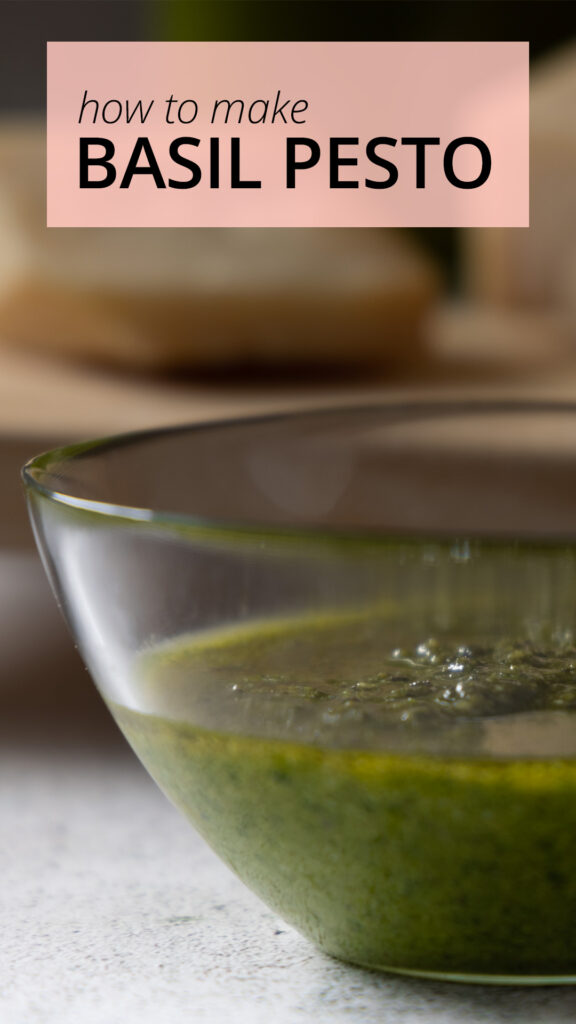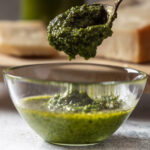Basil Pesto
The easiest, fastest, no-cook sauce you’ll ever make!
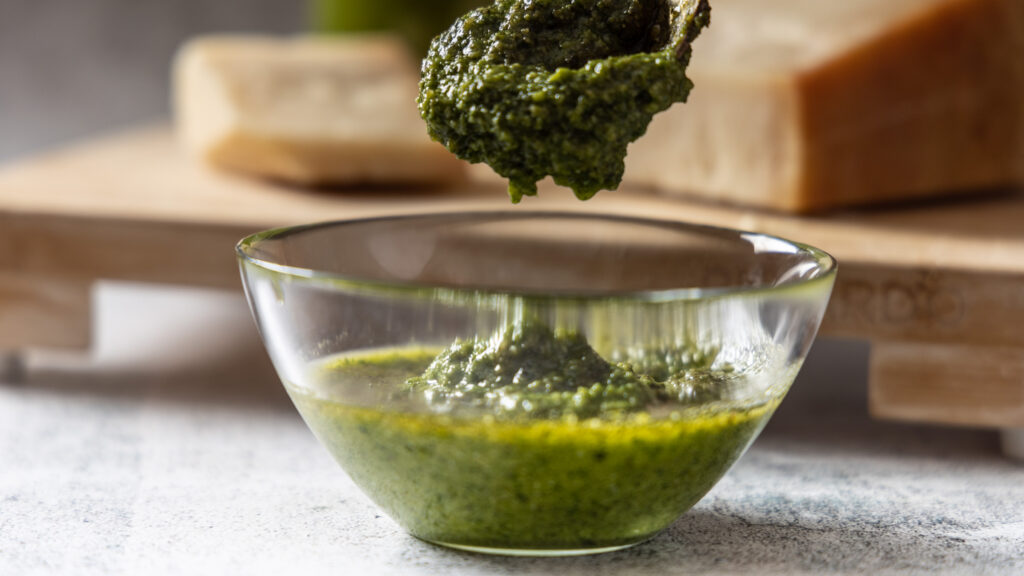
I had a truck ton of basil languishing in my garden, and it’s getting colder at night so I wanted to harvest it all before too long. Basil turns black when it gets colder, so the clock was ticking!
How long does Basil Pesto take to make?
It literally takes longer to pick the basil and wash & dry the leave than it does to make pesto!
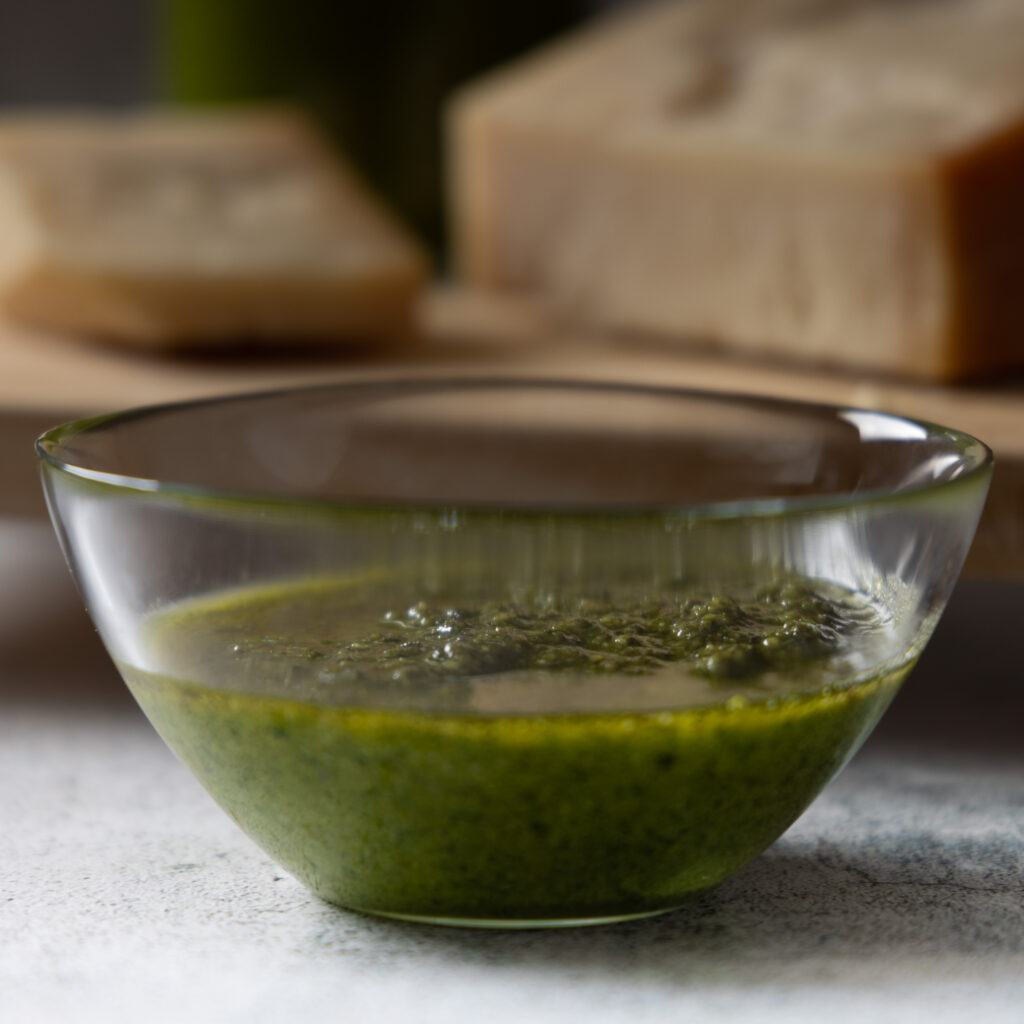
How do you use Basil Pesto?
This is such a versatile sauce, with the bonus is that it’s uncooked so it makes dinner choices super easy.
- Pasta – mix with hot, cooked pasta and you have instant dinner
- Pizza – use as a base on your pizza, instead of tomato sauce
- Bruschetta – on toasted bread, topped with cheese and broiled is my favourite
- Chicken – pesto is great brushed on grilled chicken
- Wraps – use as a base for the yummiest salad wrap
- Prawns – brush pesto on grilled prawns
- Sandwiches – mix with mayonnaise for the tastiest sandwich or sub spread
- Vegetables – mixed with grilled or roasted vegetables
What ingredients are in Basil Pesto?
Fresh basil – The main flavour of the sauce! You can make pesto with other herbs, of course, but this one uses the classic garden basil. This year I grew Genovese basil, which has large, fragrant leaves.
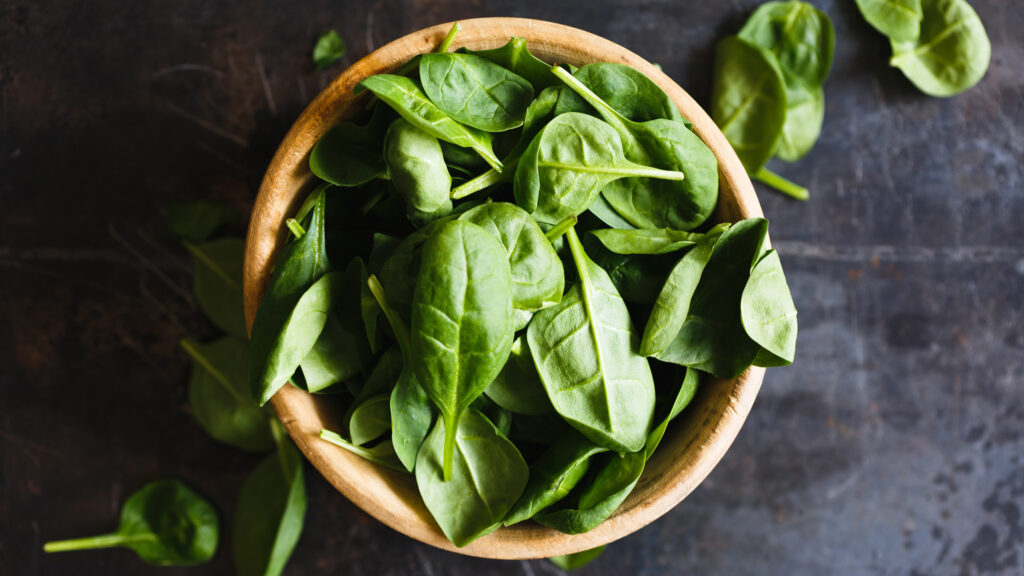
Pine nuts – Pine nuts add a rich nuttiness to the pesto. I toast them lightly in a dry skillet to bring out more flavour, before adding the nuts to the pesto.
Garlic – I love garlic, and that’s why I put it in my pesto! Lots of folks do not add the garlic, so I feel this could be optional, but do try it with. Raw garlic adds a spicy touch, but if you don’t like the strong flavour, you could roast the garlic first.
Parmesan – What cheese can you use in basil pesto? I used all Parmigiano Reggiano, because that’s what I had. You could use any hard cheese, such as American parmesan, or pecorino romano for example.
Extra virgin olive oil – Flavourful extra virgin olive oil is essential here – it binds the sauce together and creates that saucy consistency.
Can I Make Substitutions in Basil Pesto?
You can take the basic formula for pesto, and make substitutions at will. You may be surprised at what you can come up with!

Herb/Vegetable – Try parsley, arugula, beets, kale, spinach
Nuts or seeds – Try pumpkin seeds, walnuts, pistachios
Cheese – Any hard cheese: pecorino, asiago, etc.
Spice – Garlic, roasted garlic, red pepper flakes
Oil – Extra virgin olive oil, avocado oil, walnut oil
Can Basil Pesto be nut free?
Yes, if you use seeds instead of nuts.
Can Basil Pesto be dairy free?
Yes, you can use nutritional yeast in place of cheese for a dairy-free version.
The Basil Pesto Method
Traditionally, a mortar & pestle was used to grind the basil, nuts, and cheese together. A food processor is much easier, and highly recommended! If you have a nice blender such as a Vitamix, you can use that too.
Wash and dry your basil leaves, and pick out any that are brown or too damaged.
All of the ingredients except for the olive oil into the food processor. Give it a blend until all the ingredients are chopped up and blended together. Then, slowly add the olive oil until the pesto is the consistency you like. You may be adding less or more than the recipe calls for. It’s your personal preference!

Basil Pesto
Equipment
- 1 food processor or blender
Ingredients
- 6 cups fresh basil leaves washed & dried
- 2/3 cup pine nuts lightly toasted
- 4 cloves garlic peeled, whole
- 1 cup parmesan grated
- 1 cup olive oil extra virgin
Instructions
- Place all ingredients except oil into a food processor. Mix until chopped into very small pieces.
- While processor is running, slowly add olive oil until mixture is smooth and to the consistency you like.
Notes
